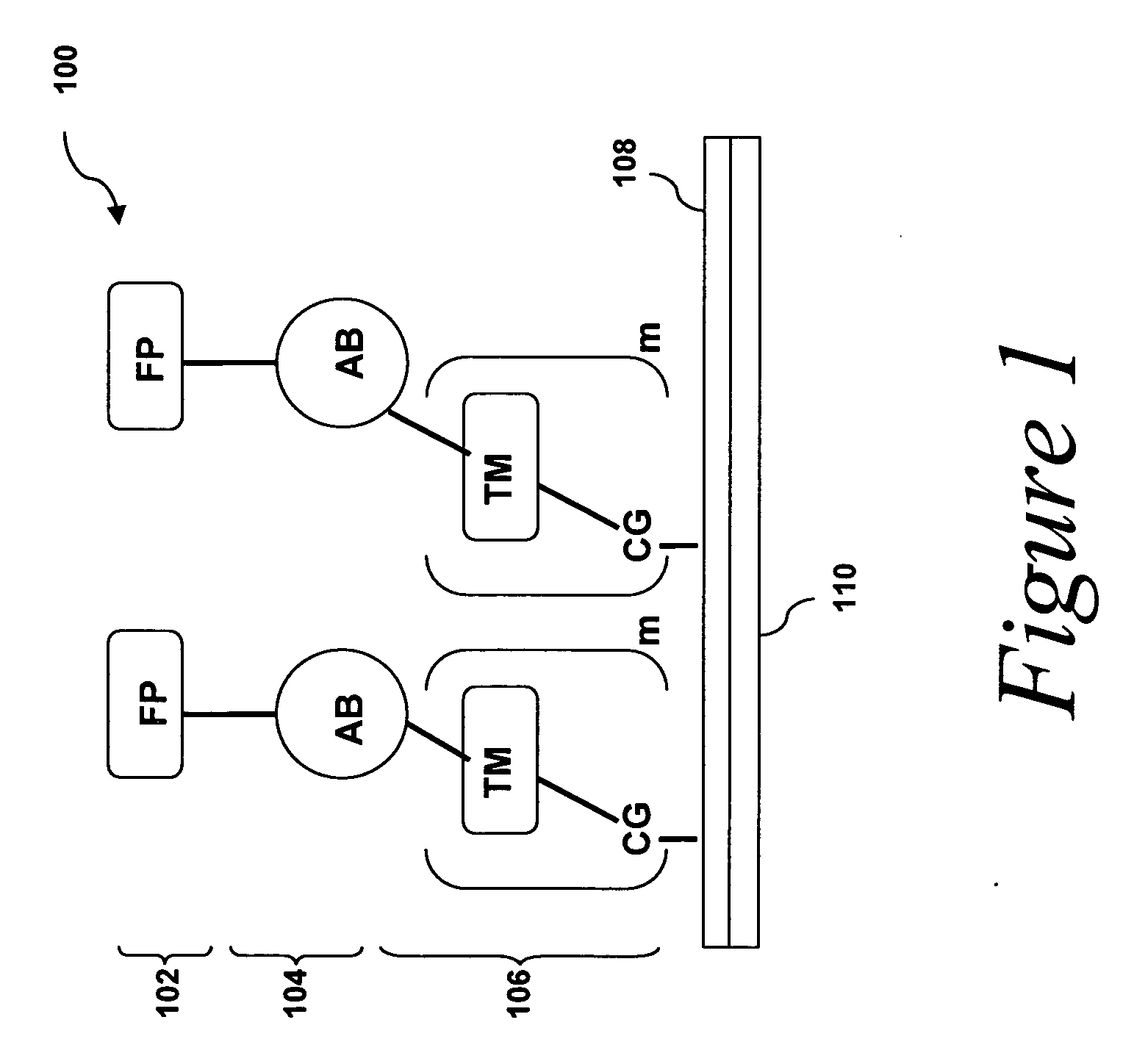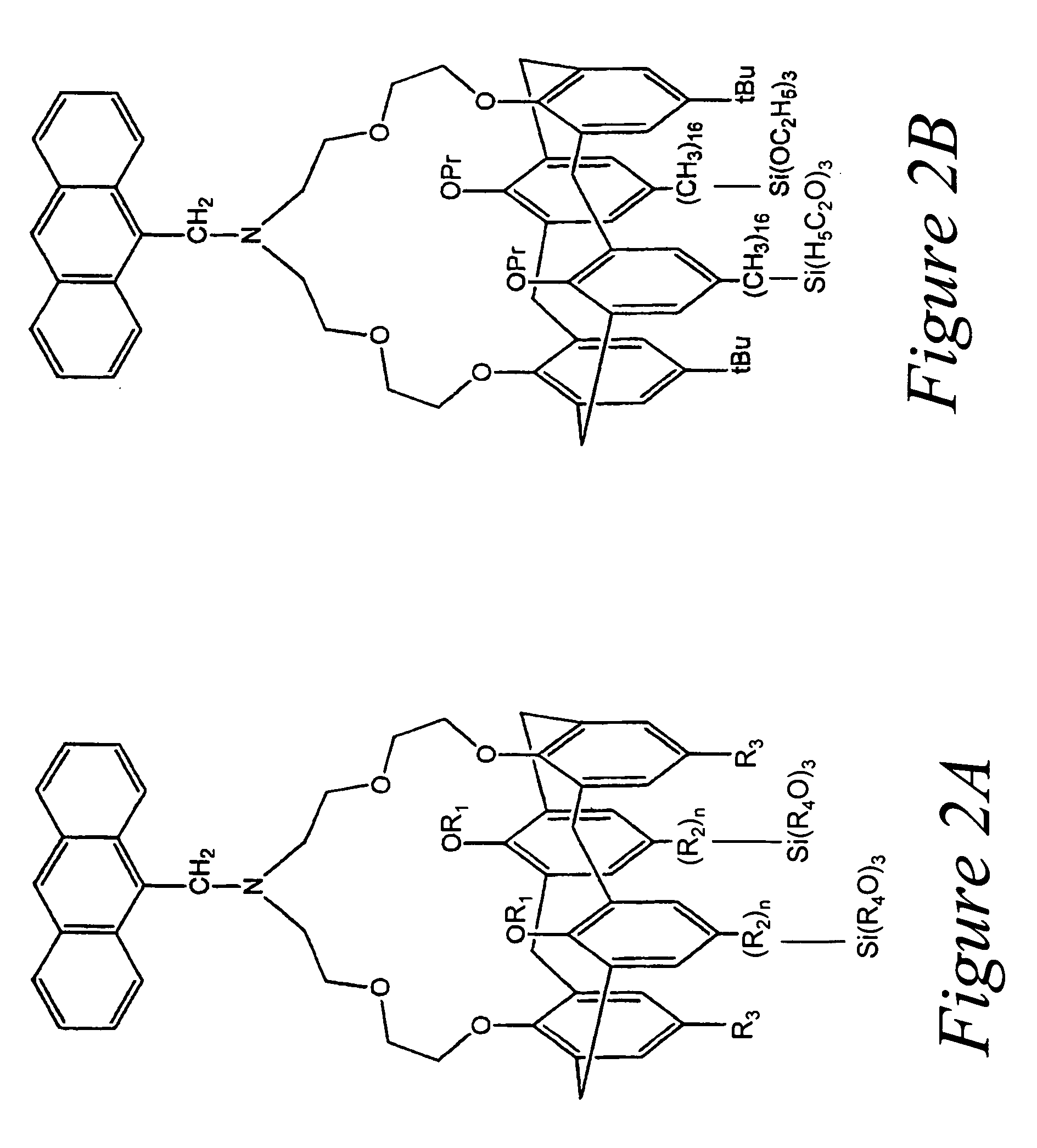Multi-transduction mechanism based microfluidic analyte sensors
a technology of multi-transduction mechanism and microfluidic analyte, which is applied in the field of microfluidics, can solve the problems of inability to provide, inability to provide, and inability to provide an indication of the error of individual measurements of microfluidic sensors
- Summary
- Abstract
- Description
- Claims
- Application Information
AI Technical Summary
Benefits of technology
Problems solved by technology
Method used
Image
Examples
example 1
[0112] Potassium ions (K+) are an important analyte in the healthcare field. This analyte is a predominant intercellular cation with an average concentration of 150 mM, whereas the normal mean serum concentration range is between 3.5 to 5.1 mM. Maintenance of this concentration gradient is critical in the adequate functioning, for example, cardiac, muscle and nerve transmission process and is governed by the sodium, potassium ATPase pump. Potassium levels are routinely determined using serum (or plasma) and urine samples. Deviations from normal levels have and are used as supportive indicators for a multitude of disease states. For example, changes in potassium serum levels can be indicative of the following conditions: hypokalemia due to such factors as insulin therapy and renal losses; hypokalemia due to acute and chronic renal failure; and Addison's disease. Increase in potassium levels in urinary samples can be indicative of primary renal diseases, r...
example 2
[0127] Monitoring of Li+ in blood is necessary for patients who suffer from manic depressive and hyperthyroidism illnesses and who are treated with lithium salts. This example illustrates the detection of lithium ion concentration in solution.
[0128] Monolayers of hexadecanethiol coupled to a bicyclic molecule with the ability to selectively complex Li+ ions were fabricated. The ability of these monolayers to function as sensors was shown by cyclic voltammetry and impedance spectroscopy techniques. Impedance experiments in the absence of a redox probe (i.e. only supporting electrolyte) provided reproducible data that shows a change in monolayer capacitance upon ion complexation. The compound showed selectivity for complexation of Li+ ions over other ions, with log KLi+,Na+˜−1.30 and log KLi+,K+˜−0.92.
[0129] All reagents and solvents for synthesis were purchased from Aldrich and used as received unless otherwise noted. N-Fmoc-iminodiacetic acid was purchas...
PUM
| Property | Measurement | Unit |
|---|---|---|
| volumes | aaaaa | aaaaa |
| volumes | aaaaa | aaaaa |
| wavelength | aaaaa | aaaaa |
Abstract
Description
Claims
Application Information
 Login to View More
Login to View More - R&D
- Intellectual Property
- Life Sciences
- Materials
- Tech Scout
- Unparalleled Data Quality
- Higher Quality Content
- 60% Fewer Hallucinations
Browse by: Latest US Patents, China's latest patents, Technical Efficacy Thesaurus, Application Domain, Technology Topic, Popular Technical Reports.
© 2025 PatSnap. All rights reserved.Legal|Privacy policy|Modern Slavery Act Transparency Statement|Sitemap|About US| Contact US: help@patsnap.com



